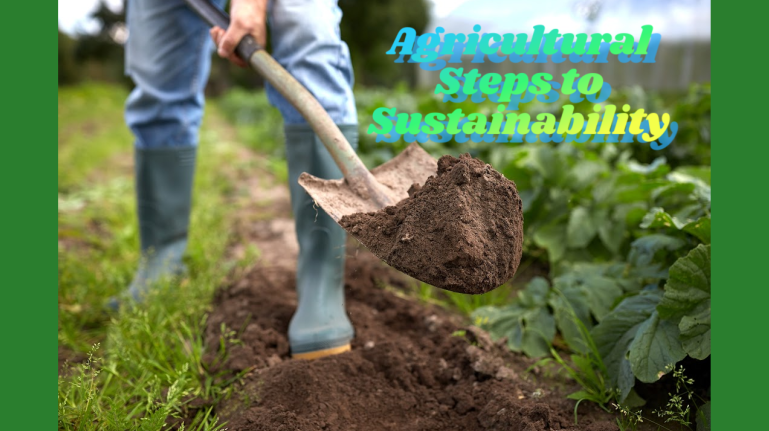Agricultural Steps to Sustainability
Agriculture has a history of contributing to ecological damage, from deforestation to mass water consumption, soil damage, and especially as of late, CO2 emissions. While there is no way to undo the damage that has already been done, a large majority of those in the agricultural industry are working towards sustainable practices, some of which directly benefit their crops.
Some common sustainability efforts are crop rotation and cover cropping, both of which have massive benefits for soil and crop health. Crop rotation is when you plant soybeans on a field for one year and corn the next, for example. This promotes soil health as the different plants require different nutrients and when the plants are rotated, it gives the nutrients time to replenish before the crop is re-planted. This makes the soil and crops healthier, to the point where it is required by USDA Organic regulations, meaning if you want your crops to be considered organic, you have to participate in crop rotation.
Cover crops are a very common practice, meaning that farmers will plant crops that they don’t intend to harvest in order to keep roots in the ground all year. With consistent roots, the soil will have increased fertility while also having lowered soil erosion, weeds, and pests. Both crops and soil thrive when cover crops are in place. Despite this, according to the USDA, only about 3 to 7 percent of farms use cover crops.
Trees can also work as a specific kind of cover crop and can have benefits for both crops and livestock while helping the environment. Trees naturally absorb carbon dioxide and release oxygen which can negate some of the mass emissions produced by farming equipment. According to the USDA, they also provide shelter from the elements since both animals and plants can be protected from the wind, cold, and heat with tree arrangements called windbreaks or other arrangements called silvopasture. Windbreaks are exactly what it says on the tin, rows of trees around crops to protect them from the elements. Silvopasture is when farmers plant trees in livestock pastures which can protect the livestock from harsh weather. It can also provide some additional income for the farmers who can sell some of the trees or plant fruit trees for extra income. Overall, it’s incredibly beneficial for all those involved.
Even if you don’t plan to go into agriculture, there are certain agricultural-related issues in the world that you can support. For example, some crops like cranberries are water crops that require places like peat bogs to grow instead of exclusively soil. Sadly, it is not as easy to maintain bogs as it is a field. While crop rotation is an easy fix for a lack of resources in a field, the bogs will dry up over time and become unusable. According to agriculture.com, when the bogs dry up, they become massive carbon emitters. Other countries like England, Scotland, Ireland, Finland, and Germany have started government-funded projects to re-wet their bogs. This not only means that they don’t release massive amounts of carbon dioxide, but they absorb it on a massive scale. The bogs even beat out massive forests with their absorption, which makes the large cost of re-wetting the bogs well worth it. This is our planet, and no cost should be too great to protect it. What will you do to help?






